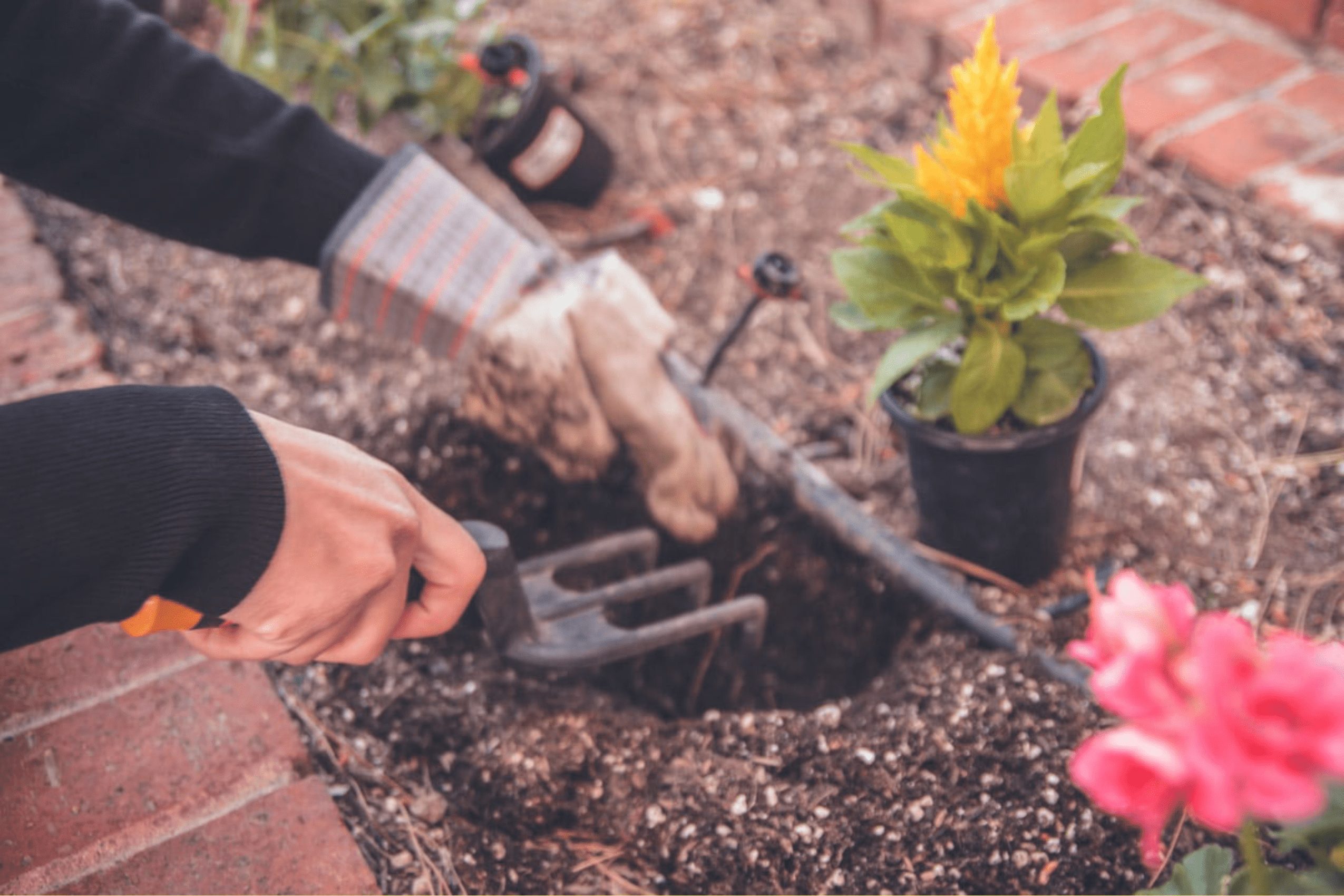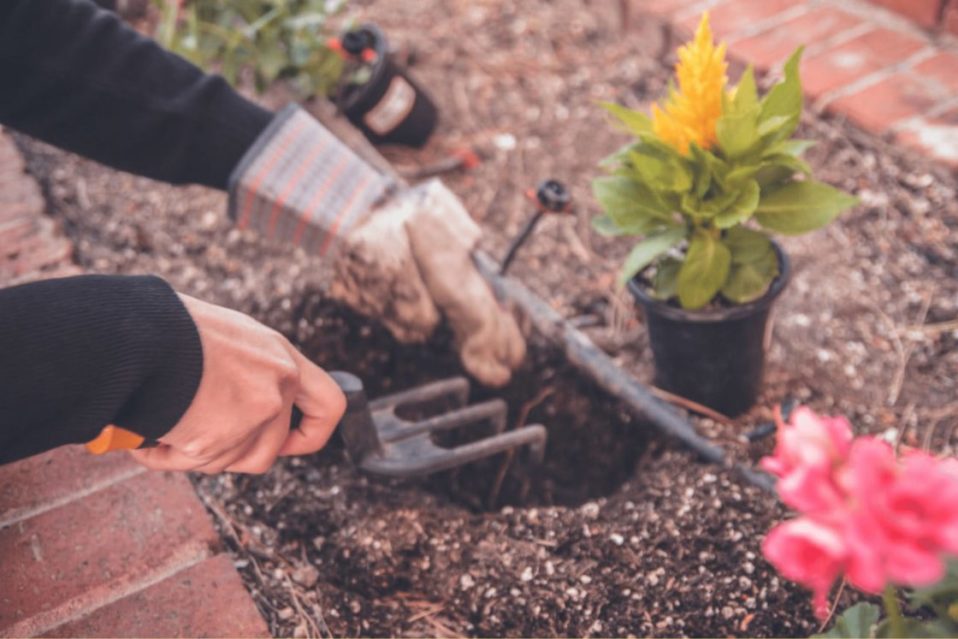
Approximately 85% of houses in America were built prior to 1980 and are in need of some kind of improvement. Problem areas that need attention can become more noticeable after the winter months, making spring the best season to pinpoint issues and get started on improvement projects. Taking care of home improvement projects during the spring also has the added benefit of making your home more resistant to damage from summer storms and the following winter which could otherwise exacerbate problems.
If you’re looking to improve your home this spring, here are some key areas to keep in mind and some tips to help make the process a little bit easier.
Checking for Damage
Following a winter’s worth of snow, your home could have damage that you need to identify and fix. For instance, water damage is from snowmelt is a large concern to keep in mind and it can be identified by a couple of notable signs.
Firstly, check your basement and exterior foundation for signs of standing water. Over 98% of all homes with basements will experience water damage at some point. As it is the lowest level in your home, a build-up of snowmelt is most likely to cause flooding here. That said, if you have access to an attic space, you should also check there to ensure no water has seeped through the roof and made its way inside from up there. Once these places have been inspected, you can move on to looking at smaller telltale signs.
Smaller indications of water damage from snowmelt can be found by checking your home for ceiling stains or sagging. Mold growth in the basement drywall can also be an indication that moisture is making its way inside. If these signs are present, it’s a good idea to call in a professional to assess your home and find the cracks that need to be fixed. While some you may be able to find on your own, getting a professional inspection can remove any guesswork and further enable you to shore up your home’s weatherproofing.
Roof Inspections
Going hand in hand with the above, roof damage can be a major contributor to water damage. The good news is that spring is the best time to undergo a roof inspection. Sometimes offered for free, these inspections will be able to identify any damaged areas and give you an idea of what needs to be done. Without the proper knowledge, and inspection like this can be difficult to do on your own, and even then most homeowners lack the tools necessary to properly inspect their own roofs.
The National Roofing Contractors Association recommends that homeowners check their roofs no less than twice each year, once in the spring and then again in the fall. This is to ensure that no damage from winter snow or summer storms goes undetected and causes problems. While it may sound like a lot of work, inspections like this can save you from having to face more expensive problems down the road.
Once any and all problem areas have been established you can begin repairing the damage and taking steps to mitigate damage in the future.
Upgrading Your Landscaping
Now that you’ve gotten all of the repairs taken care of, you can move on to improving your outdoor space to enjoy during the summer. Landscaping upgrades can be as simple or as complex as you want, the only real limits are space and imagination. A few of the most popular upgrades this year are set to include:
- Patio Pavers: Poured concrete patios do their job; however, replacing the drab grey concrete with pavers in varying shapes, sizes, and colors can help completely transform your space. Pavers are also easier to maintain than poured concrete, as you can easily replace broken pavers or flip over stained ones to keep your patio looking its best.
- Adding a Fire Pit: Fire pits make for a great addition to any backyard or patio. Not only do they create a central focal point but they can serve as a great entertaining space. Both children and adults will love gathering around the fire pit at night to roast marshmallows and hang out. There are a variety of different types of fire pits you can install both in look and function. Glass firepits have been gaining popularity due to their modern shimmery appearance; however, you can’t go wrong with traditional wood-burning fire pits either. Which one you choose will depend on your own personal tastes.
- Updating Your Deck: Like patios, decks can become worn down and dated. Updating them with modern materials such as PVC planks can help them appear more modern, as well as help to cut down on damage. That said, if you don’t mind additional maintenance, natural wood is often less expensive than composite decking, though it will need restaining every one to three years. Both have their pros and cons, but either option can help you create a clean and attractive outdoor space for spring.
- Outdoor Lighting: Installing outdoor solar-powered LED lighting can also help you create a more comfortable outdoor space. Whether you use the lights to surround your patio or illuminate walkways, outdoor lighting can help make nighttime navigating easier and even deter thieves.
These are just four of the most popular outdoor improvements that are set to emerge this spring. As the weather warms up, tackling these projects early can give you more opportunities to enjoy them during the season.
Gardening Preparations
Gardening is also another springtime activity that is worth getting started early. For instance, if you’re having trouble with your grass coming in after winter, hydroseeding is one of the fastest ways to regain your lawn. Cost-effective and high quality, hydroseeding can even help prevent erosion. Typically, grass should begin growing within the first seven days of planting, with the new lawn being established fully within three to four weeks. Tackling this early will give you more chances to enjoy your lawn, as well as focus on other gardening tasks that need to get done.
If you’re not sure where to start, some tips for helping you plant your garden this spring include:
- Clear Out Grow Beds While this might seem obvious, it still bears mentioning. Clear your grow beds of winter debris, old growth, and any other matter that might have built up. Try to clear the boarders until you reach bare soil. Everything that you pull out can be either composted or put in a bin to break down. Any weeds should be put into a bin, as opposed to a compost pile, as the seeds can go on to cause you trouble if allowed to germinate. Once your beds have been thoroughly cleaned out, you can begin prepping and planting.
- Create a Compost Area Speaking of compost, if you haven’t already, creating a designated compost area is one of the best ways to create nutrients for your plants. Make sure to fill your compost bin with plenty of grass clippings, paper, and wood prunings to help boost the composting process. You should also turn it once a month with a pitchfork to ensure everything stays aerated.
- Sowing Seeds Seeds that have longer growing seasons should be planted earlier, and can even be put in a heated propagator as early as January or February to kickstart growth. Plants that require this treatment include begonias, geraniums, peppers, and eggplants. You can also start planting summer flowering bulbs and seeds to ensure that you’ll have beautiful florals come summer.
- Install Water Butts Water butts are essentially large jugs that collect rainwater. Using this as a watering source for your garden isn’t only environmentally friendly, but it’s a great way to cut back on water costs. Rainwater can also be better for plants as it tends to be less alkaline than tap water.
- Move Any Deciduous Shrubs Late winter/early spring is also the best time to move deciduous shrubs as they are still dormant. When moving shrubs, dig a small trench around them and try to remove as much of the root ball as possible. The more you leave intact the easier it will be for the shrub to re-establish itself in a new area. Once the shrub is moved, be sure to water it well.
The first onset of spring is the best time to kickstart your gardening to ensure you get the best blooming and flowering possible. You may also consider investing in local flora as it will require less maintenance and will be more acclimated to the climate in your region. For instance, if your area is prone to draughts, local plants will be more likely to withstand these conditions than those important from rainier climates. Planting local is also best for wildlife and it doesn’t pose any invasive threat.
Updating Appliances and Utilities
While you might not be running your heating and cooling as much during spring, an ineffective system during the summer can cost you big. Replacing your old HVAC during the spring can help keep you more comfortable during the summer and save you hundreds of dollars in energy costs. This, coupled with a smart thermostat, can also allow you to make the most out of your heating and cooling system, but allowing you to custom program the temperature. For instance, you can set the temperature higher for when your not home or set it to kick on first thing in the morning. This level of control allows for greater comfort and the further mitigation of costs.
Likewise, spring is perfect for updating household appliances such as washing machines, dryers, dishwashers, and refrigerators. This is because you can usually find last year’s models on sale. Retailers usually put discounts on these ‘older’ items so that they can make room for newer models during the summer. Try shopping around Memorial Day for the best deals of the season.
Spring Improvements Made Easy
Hopefully these tips and tricks make it a bit easier to plan out your spring to-do list. This season is the best time to get started on home improvements that you can then enjoy throughout the rest of the year. From repairing wintertime damage and creating comfortable outdoor spaces to updating interior appliances and utilities, spring is the best time of the year to get started.







